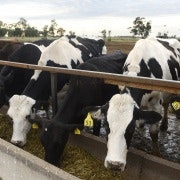What to do with Wesfarmers' war chest?
With the $1 billion sale of its insurance broking and premium funding businesses Wesfarmers will exit the insurance sector with $3 billion of cash and a $1 billion profit. The key question for shareholders is what it does next.
The sale of the insurance units to US-based broker Arthur J, Gallagher & Co for $1 billion plus the repayment of $150 million of funding follows last year’s announcement of the $1.85 billion sale of Wesfarmers’ insurance underwriting operations to IAG. That deal was cleared by the Australian Competition and Consumer Commission earlier this month, although it still needs other regulatory approvals.
Assuming both deals clear their regulatory hurdles, however, Wesfarmers will have quit a sector in which it has been sub-scale and where the returns haven’t justified the volatility and risk it has experienced and will be heavily and increasingly cashed up.
With its retail brands, other than Target, performing strongly and their cash flow generation building (free cash flows were up 30 per cent in the first half of this financial year) as their earnings continue to grow and Bunnings and Coles continue to recycle the capital tied up in their property portfolios Wesfarmers faces a pleasant dilemma.
While it did undertake some capital management last year, returning 50 cents a share, or $579 million to shareholders, traditionally the group has been more interested in growth by acquisition than in capital management.
Wesfarmers’ Richard Goyder would also be conscious that once the sales of the insurance operations have been completed, his group will look less like a conglomerate that at any time in its recent history. It will still have its coal, chemicals and industrial and safety divisions, but they are dwarfed by its retail businesses.
The strategic choice is whether to continue to shed the non-retail operations and evolve into a pure retailer or make another major acquisition to rebuild more of a conglomerate structure. The tactical option would be to return capital to shareholders while deferring that strategic decision.
Buying back capital at the pricey levels at which Wesfarmers shares are now trading may not be particularly appealing.
Given the historically low cost of debt and relatively cheap equity it might make more sense for Wesfarmers to do what it has traditionally done and, with the Coles group acquisition now firmly bedded down and most of the brands performing well, make another big group re-shaping acquisition.
The recent transfer of the highly-regarded Ian McLeod from Coles to a commercial director’s position within Wesfarmers, reporting to Goyder, might be a sign that Goyder and his board want to at least explore the possibilities for another major acquisition. McLeod is too senior and talented to be handed a sinecure.
With levels of net debt after the insurance sales that will, in the context of its balance sheet, probably be less than optimal and with its shares arguably fully priced Wesfarmers will undoubtedly have the financial capacity to do something significant if it chooses the expansion option.
Equally, of course, it could hand a big chunk of capital back to shareholders, although that wouldn’t address the questionmark over the future of its conglomerate structure and strategy.















